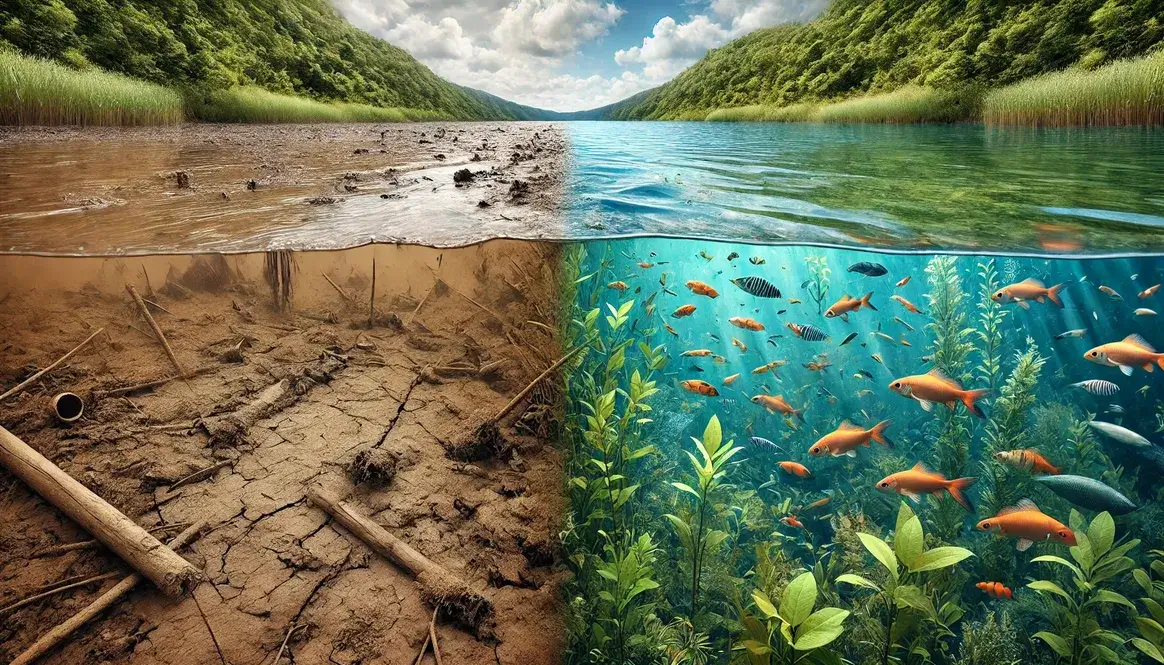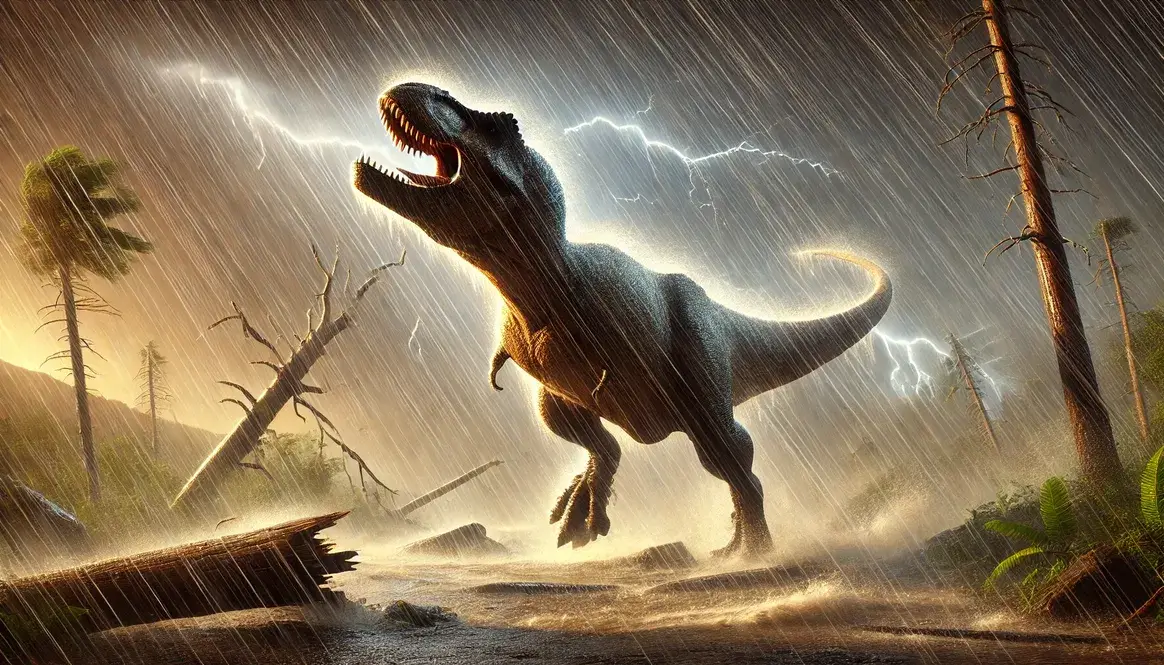When the asteroid that caused the extinction of non-avian dinosaurs struck Earth 66 million years ago, it triggered one of the fastest climate changes in our planet’s history. In just a few days, temperatures plummeted from warm, stable conditions to near-freezing across much of the globe. This rapid climate shift played a major role in the mass extinction that followed.
| Climate Change Timeline After Impact | Temperature Effects |
|---|---|
| First hours to days | Temperatures dropped by 18-29°C (32-52°F) globally |
| First weeks to months | Darkness caused by debris blocked sunlight worldwide |
| First 1-2 years | Freezing conditions persisted across most regions |
| 2-7 years | Gradual warming as dust settled |
| 20-30 years | Return to pre-impact temperatures |
The Last Days of the Cretaceous
Before the asteroid impact, Earth enjoyed a warm, stable climate. The climate near the end of the Cretaceous period supported rich ecosystems worldwide. Average temperatures were about 8°C (14°F) warmer than today. Palm trees grew near the poles, and dinosaurs roamed the Arctic regions.
The stability of this climate system made the coming changes even more devastating. Animals and plants had adapted to consistent conditions over millions of years. They weren’t prepared for sudden, extreme changes.
How Fast Did Climate Change When Dinosaurs Died
The speed of climate change after the asteroid impact was unprecedented. Here’s what happened to global temperatures:
| Time After Impact | Global Temperature Change |
|---|---|
| 1-2 days | Drop of 18-29°C (32-52°F) |
| 1 week | Further drop of 3-7°C (5-13°F) |
| 1 month | Stabilized at near-freezing in many areas |
| 1 year | Remained 10-15°C below normal |
These temperature changes happened much faster than today’s climate change. While modern climate change occurs over decades, the dinosaur extinction event caused more severe temperature drops in just days or weeks.
Scientists know these rates from studying rock layers formed during this time. Chemical evidence in these rocks shows how quickly Earth’s climate systems changed after the impact.
The asteroid impact threw so much dust and debris into the atmosphere that sunlight couldn’t reach Earth’s surface. This caused temperatures to drop rapidly, similar to what happens during a volcanic winter, but much more severe.
Immediate Effects: The First Few Years
The years immediately following the asteroid impact brought the most severe and rapid climate changes. These changes happened in distinct phases, each with its own devastating effects on Earth’s ecosystems. The combination of darkness, cold, and acid rain created conditions that made survival increasingly difficult for most species on the planet.
Impact Winter Phase
The first phase of climate change after the asteroid impact was called the impact winter. Think of Earth getting wrapped in a thick, dark blanket that blocked out the sun. Powerful simulations of extinction weather show this darkness lasted between 6 to 18 months.
The effects happened in stages:
- First 24 hours: Dust and debris filled the sky
- Days 2-7: Photosynthesis stopped worldwide
- Weeks 1-4: Ice crystals formed in the upper atmosphere
- Months 1-6: Complete darkness in many areas
Ancient weather patterns changed dramatically, creating storms unlike anything seen before or since. The darkness was so complete that even the hardiest plants struggled to survive.
Acid Rain Period
The impact caused more than just darkness and cold. When the asteroid hit Earth, it struck rocks containing sulfur and other chemicals. These materials mixed with water in the atmosphere to create acid rain stronger than any modern industrial pollution.
| Time Period | Acid Rain Effects |
|---|---|
| First month | Extreme acidity (pH 0-2) |
| Months 2-6 | Strong acidity (pH 2-4) |
| Months 7-12 | Moderate acidity (pH 4-5) |
| Year 2 | Return to normal (pH 5-6) |
Water bodies changed dramatically during this time. The acid rain affected different places in different ways:
- Coastal areas: First to experience intense acid rain
- Inland regions: Received weaker but longer-lasting acidic rainfall
- Polar regions: Less acid rain but severe temperature drops
The acid rain period lasted about two years in total, but its worst effects happened in the first six months. This acid rain made it hard for many animals to find clean water to drink, adding to the challenges they already faced from the cold and dark.
These conditions created changes far more rapid than Earth’s natural climate shifts, making it nearly impossible for most large animals to adapt in time.
Mid-Term Changes: Decades of Recovery
After the initial severe climate changes, Earth entered a longer period of gradual recovery. During these decades, temperatures and weather patterns slowly moved toward new stable conditions, though they would never return exactly to their pre-impact state.
Temperature Fluctuations
The path to temperature recovery wasn’t smooth. High carbon dioxide levels from impact-triggered fires and volcanic activity created an unstable climate with frequent temperature swings. These changes forced many animals to move with changing temperatures.
Temperature recovery varied by region:
Northern Hemisphere
- Years 3-5: Winter temperatures -10°C below normal
- Years 5-10: Gradual warming begins
- Years 10-20: Return to freezing winters only
Southern Hemisphere
- Years 3-5: Milder temperature drops
- Years 5-10: Faster initial recovery
- Years 10-20: More stable temperatures
Rainfall Patterns
Ocean circulation changed significantly during this period, affecting rainfall worldwide. This created a complex pattern of wet and dry regions that kept shifting as temperatures stabilized.
Rainfall recovery followed this timeline:
| Time Period | Precipitation Pattern |
|---|---|
| Years 3-5 | Extreme drought in most regions |
| Years 5-10 | Heavy rains in coastal areas |
| Years 10-15 | Irregular monsoon patterns |
| Years 15-20 | More predictable seasons |
| Years 20-30 | New rainfall patterns establish |
The changing rainfall affected different areas in different ways. Coastal regions received more rain than before, while some inland areas became drier. Plant life adapted gradually to these new conditions, which helped stabilize the water cycle.
By year 30 after the impact, most regions had developed regular rainfall patterns again, though these patterns were different from those before the extinction event. This new climate system would become the foundation for the recovery of life on Earth.
Long-Term Climate Shifts
The long-term recovery of Earth’s climate systems took hundreds of years. During this time, the planet established entirely new patterns that would shape life’s recovery after the extinction event.
Century-Scale Changes
Over the first hundred years, temperatures continued to find their new normal. Unlike pre-extinction hot conditions, the new climate settled into patterns more similar to today’s climate. This stabilization happened in phases:
First Century (Years 1-100)
- Decades 1-2: Major temperature swings
- Decades 3-4: Beginning of pattern formation
- Decades 5-10: Gradual stabilization
The new climate patterns created different seasonal cycles than those that existed during dinosaur times. Before the extinction, seasons were mild with small temperature differences. The new climate had stronger seasonal changes, which affected how life evolved afterward.
Ocean Temperature Recovery
Ocean recovery took longer than land recovery because water heats and cools more slowly than air. Sea levels changed significantly as ocean temperatures shifted, reshaping coastlines worldwide.
The process followed this pattern:
| Ocean Layer | Recovery Time | Temperature Change |
|---|---|---|
| Surface waters | 100 years | -8°C to normal |
| Middle waters | 300 years | -5°C to normal |
| Deep waters | 1000 years | -3°C to normal |
These changes in ocean temperature affected marine life in several ways:
- Surface-dwelling animals faced the fastest changes
- Deep-sea creatures had more time to adapt
- Coastal ecosystems changed completely
- New ocean currents formed, creating different migration routes
The oceans eventually stabilized into a new system that was cooler than before the extinction. This new ocean environment would become home to modern marine life, very different from the sea creatures that lived in dinosaur times.
Reading the Evidence
Scientists learn about past climate changes by studying different types of evidence preserved in rocks and fossils. Each type of evidence tells part of the story about how quickly Earth’s climate changed when the dinosaurs died out.
Rock Layer Records
Rocks formed during the extinction period contain chemical signatures that record temperature changes. These signatures work like a thermometer from the past. When scientists measure them, they can tell how hot or cold it was when the rocks formed.
Chemical evidence comes in several forms:
- Oxygen isotopes: Show temperature changes
- Carbon isotopes: Reveal changes in plant life
- Sulfur traces: Indicate acid rain levels
- Mercury levels: Show volcanic activity
The boundary clay that marks the extinction contains special evidence. This thin layer of rock shows up worldwide and contains high levels of iridium – a metal that came from the asteroid. By studying rocks just above and below this layer, scientists can measure how quickly temperatures changed.
Fossil Climate Markers
Plant and animal remains from the extinction period provide strong evidence for rapid climate change. Different types of fossils tell different parts of the story:
| Fossil Type | What It Tells Us |
|---|---|
| Leaf fossils | Temperature and rainfall |
| Pollen grains | Plant species present |
| Marine shells | Ocean temperature |
| Fish teeth | Water chemistry |
| Soil traces | Local climate conditions |
The most valuable evidence comes from marine fossils. Tiny sea creatures called foraminifera built shells that recorded ocean temperatures. When these organisms died, their shells sank to the sea floor and became fossils. Scientists can measure the chemical makeup of these shells to determine ocean temperatures at different times.
Soil samples from this time also contain important clues. Changes in soil chemistry show how quickly rain patterns changed after the impact. These changes appear suddenly in the rock record, supporting other evidence that climate change happened very rapidly.
Fast Changes, Big Effects
The evidence tells us that when the dinosaurs died, Earth’s climate changed more quickly than at any other known time in history. In just a few days, temperatures dropped dramatically, followed by years of darkness and acid rain. While the planet eventually recovered and found a new balance, it took centuries for stable patterns to emerge.
Scientists continue studying these ancient climate changes. The more they learn about how Earth’s climate changed during the extinction event, the better they understand how quickly our planet’s systems can change. This ancient climate crisis serves as a reminder of how sudden environmental changes can affect life on Earth.









